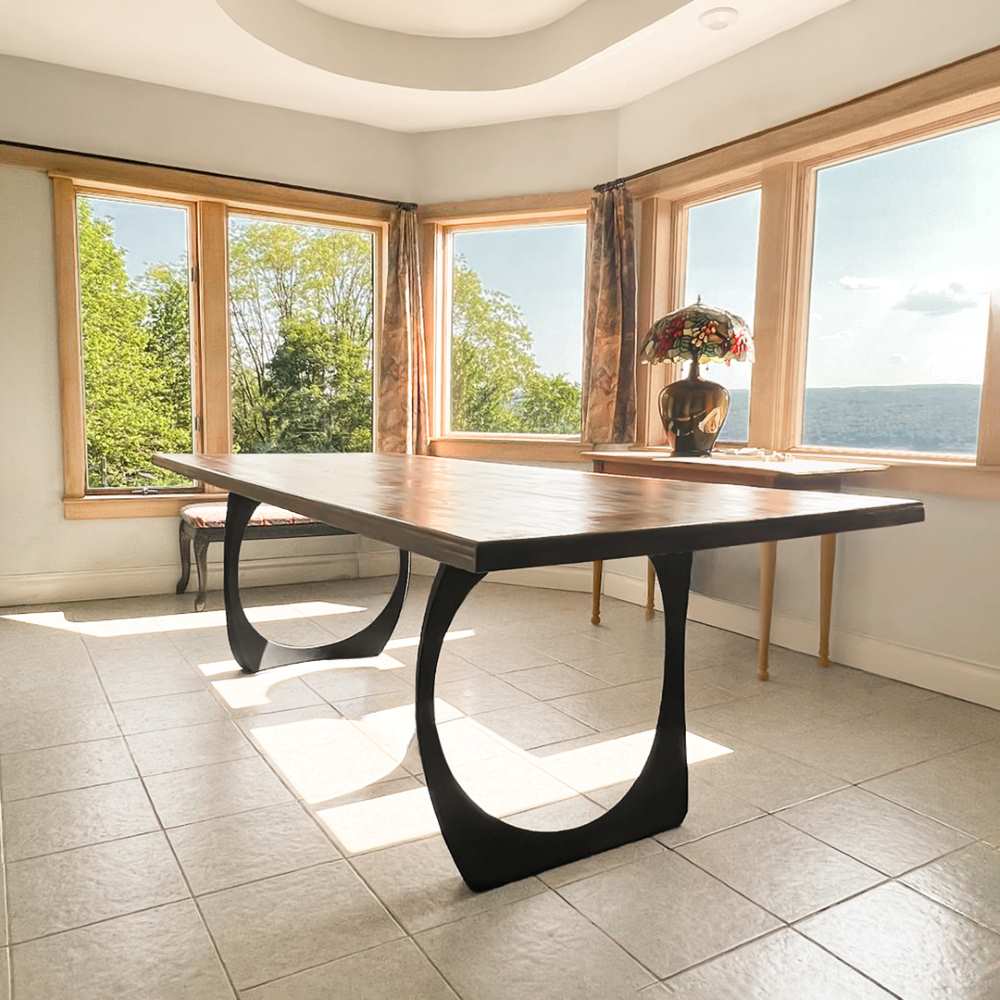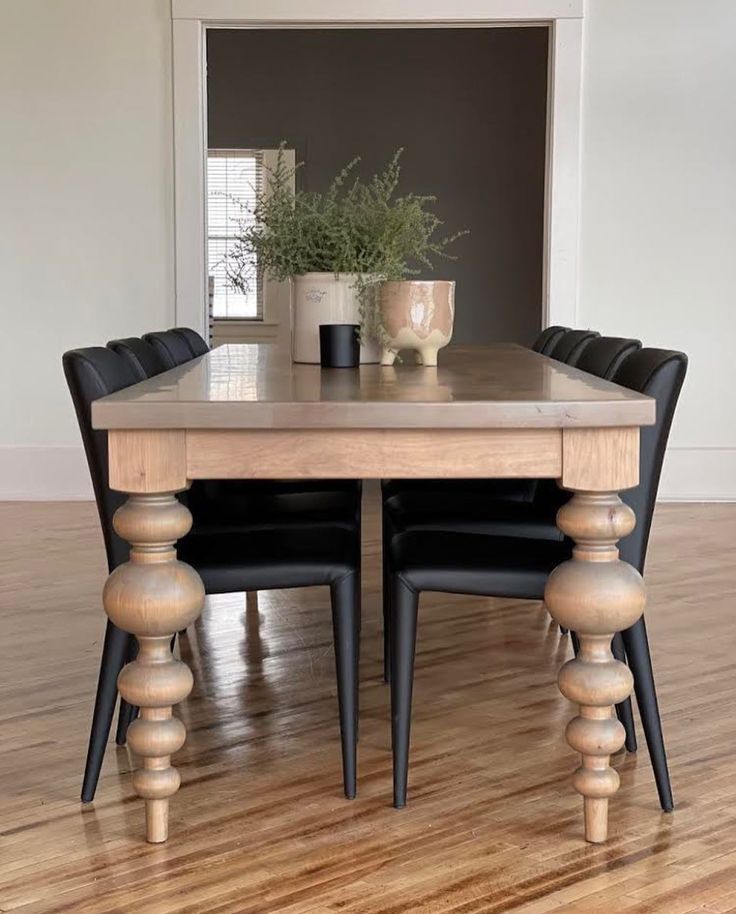Tips for Installing Dining Room Table Legs for a Modern Look
Tips for Installing Dining Room Table Legs for a Modern Look
Blog Article
Professional Tips for Setting Up Dining-room Table Legs for Maximum Stability
When it comes to setting up dining space table legs, attaining maximum stability is extremely important for both functionality and aesthetics. What certain techniques can boost security even additionally?
Select the Right Legs
When choosing the appropriate legs for your dining area table, it is vital to consider both performance and visual appeals. The legs you select will dramatically affect the overall style and security of the table. Initially, examine the table's intended use; if you expect constant gatherings, sturdier legs, such as those made from strong wood or metal, might be a lot more appropriate, as they use raised sturdiness and support.
Basic dining tables usually range from 28 to 30 inches in height, so make sure the legs line up with this criterion for convenience. Conical legs can add a contemporary touch, while transformed legs could communicate a more traditional aesthetic.

Select Appropriate Equipment
How can the ideal hardware improve the security and durability of your dining-room table? The option of suitable equipment is crucial to guaranteeing that the legs of your table are firmly connected and able to hold up against regular use. Premium screws, screws, and braces give the necessary strength to sustain the weight of the table, as well as any extra loads placed upon it during meals or celebrations.
When choosing screws, choose those made from resilient products such as stainless steel or brass, which stand up to corrosion and maintain integrity over time. The length of the screws is similarly vital; they should penetrate deeply right into the table's framework without jeopardizing integrity. For bolted links, take into consideration utilizing lock washing machines to avoid loosening up due to vibration or activity.
Additionally, making use of corner brackets can add additional assistance, specifically for bigger tables or those with much heavier tops. These braces disperse weight uniformly and aid maintain the table's shape. Guaranteeing that the hardware you choose is suitable for the particular products of your table will additionally boost its overall stability and durability, allowing you to appreciate your eating experience for many years to come.
Ensure Appropriate Alignment
Appropriate placement of eating area table legs is essential for both aesthetic appeal and practical security. To achieve ideal positioning, begin by determining the distance from the table's edges to the leg accessory points.
Use a degree throughout installment to confirm that each leg is vertical to the table top. It is a good idea to mark the preferred leg positions on the bottom of the table with a pencil or covering up tape before protecting them.
Additionally, verify the alignment after the initial screws are tightened, as adjustments might be needed prior to fully protecting the equipment. By focusing on appropriate placement, you not just enhance the table's general style however also make sure that it continues to be stable and useful for many years to find.

Think About Weight Circulation
After making certain appropriate alignment of the dining-room table legs, it is very important to take into consideration weight circulation to improve security and capability. dining room table legs. Correct weight distribution is vital in avoiding guaranteeing and wobbling that the table can sustain its desired lots without risk of tipping or breaking down
When positioning the legs, ensure they are placed at equal ranges from the center of the table to uniformly disperse the weight across the framework. Consider the weight of the tabletop and any type of products that will often relax on it, such as tabletop devices or decorative pieces. Tables with heavier surfaces must preferably have legs positioned closer to the corners, as this maximizes the base of support and decreases the threat of instability.
Additionally, if the table is intended for usage in a high-traffic area, think about using larger materials for the legs or including maintaining elements, such as cross-bracing or a lower rack - dining room table legs. These modifications can assist preserve balance and avoid shifting throughout use. Ultimately, a well-considered weight circulation strategy will considerably important site enhance the table's overall efficiency, guaranteeing it remains a appealing and useful focal point for your eating space
Test Security Prior To Usage
Checking the stability of the dining-room table before usage is a crucial action that must not be neglected. Ensuring that the table is protected and secure can stop accidents and extend the life expectancy of the furnishings. Begin by using gentle stress to various points on the table surface area. Lower on the center and then along the sides, moving or observing any wobbling. Determine the legs or joints that might need modification. if the table shows instability.
Next, check that all bolts and screws are tightened correctly. Loose links can bring about instability and potential damage in time. If needed, make More about the author use of wood glue on joints to improve stability, ensuring to enable appropriate drying out time.

Conclusion
In conclusion, the installation of dining-room table legs needs mindful consideration of materials, weight, equipment, and alignment circulation to achieve maximum stability. By picking premium bolts and sturdy legs, ensuring specific positioning, and distributing weight evenly, the structural honesty of the table can be substantially boosted. Conducting a stability examination prior to regular use better makes certain that the table will stand up to everyday stress, thereby offering a trusted and secure eating experience.
When it comes to mounting eating space table legs, accomplishing maximum security is vital for both performance and aesthetics. The legs you choose will significantly impact the total design and security of the table (dining room table legs). Conventional dining tables normally vary from 28 to 30 inches in height, so make sure the legs straighten with this standard for comfort.Correct alignment of dining room table legs is you can check here necessary for both aesthetic appeal and functional security.In verdict, the setup of eating area table legs calls for careful consideration of products, weight, equipment, and placement circulation to achieve maximum stability
Report this page